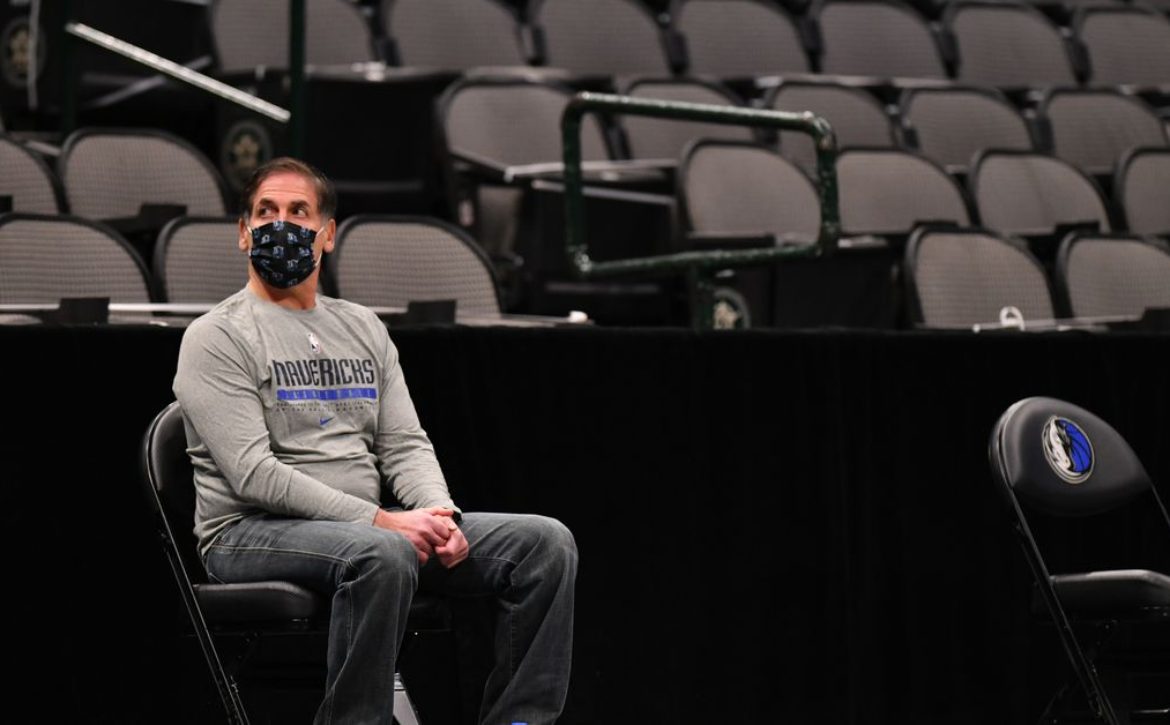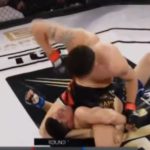
Mark Cuban is standing up to patriotism for profit in sports
Photo by Glenn James/NBAE via Getty Images
Playing the national anthem before sporting events is no longer a way to heal and unite. The Dallas Mavericks quietly made the decision to phase out playing the national anthem before games this season at the request of owner Mark Cuban, according to a report from The Athletic. The Mavericks won’t be playing the anthem moving forward. The move comes after widespread action during the anthem swept through the sports world as a way to protest social justice and systemic racism towards people of color.
The blowback from Cuban’s decision began as soon as the story broke. Pennsylvania congressman Dan Meuser said it “disrespected” the country. Conservative podcaster Ben Shapiro suggested the league play the Chinese national anthem instead, in an attempt to be witty. Actor Antonio Sabato Jr, most recently known for his roles in Little Women, Big Cars and Little Women, Big Cars 2 said the Mavericks owner “belongs in the trash can,” which is coincidentally where you can find his 2009 reality dating series My Antonio, which was cancelled after one season.
The NBA issued a statement saying all teams will play the national anthem in the future with some fans returning to arenas shortly after the Mavericks story broke. Cuban agreed to go along with it in his own statement.
There has been a calculated effort to push conformity by making athletes stand for the anthem and hope everyone else emulates them. This isn’t a tradition that started with the founding of the nation, but rather one that began in the 20th century to raise national morale during World War I, and occasionally used to mark major events before being coopted by the federal government to perpetuate patriotic displays by using taxpayer funds.
Here’s a brief history of the national anthem in sports.
When did we start playing the Star Spangled Banner before games?
There is historical evidence that occasionally the song was played in the 19th century. It was common the the late 1800s for live military bands to play before National League and American League games, but at the time Star Spangled Banner was one of several songs in rotation. Hearing it was fairly uncommon.
The ethos of the song in sports changed in 1918 during the World Series. The Cubs and Red Sox were playing in Chicago, and it was an incredibly difficult time for the nation. World War I was raging, the federal government called for the baseball season to end early, announcing that baseball players could be drafted immediately following play. There were threats players would strike and skip the World Series due to lack of interest, and the tension-filled finale to the season was punctuated by one moment.
During the seventh inning stretch of Game 1, the band played the Star Spangled Banner. Red Sox infielder Fred Thomas, who was playing because he was granted a furlough from the Navy, turned to the American flag and saluted during the playing of the song. A country in dire need of morale, applauded raucously following the song in appreciation of Thomas’ service.
From that moment forward the song and sports were inexorably linked. The Star Spangled Banner became the national anthem in 1931, but it still wasn’t played before games despite the iconic moment in the World Series 13 years earlier.
The NFL starts the patriotism snowball
Once again patriotism led to the resurgence of the song, but there was a considerable gap. It wasn’t until the conclusion of World War II that there was a push to integrate the anthem into sporting events. Then-commissioner of the NFL Elmer Layton believed it was important to continue the theme of patriotism even after the war was over. Layton mandated that the anthem be played before NFL games, saying:
“The playing of the national anthem should be as much a part of every game as the kickoff. We must not drop it simply because the war is over. We should never forget what it stands for.”
So here we have one sports commissioner seeing a need to instill pride in the nation after a devastating World War making a unilateral decision to make the national anthem a staple of the league’s pre-game routine.
Players being on the field for the anthem is a much, much more recent rule in the NFL. Up until 2009 players could choose to be on the field, in the locker room, wherever they wanted during the anthem itself. Make no mistake: the change wasn’t because the league saw the anthem as necessary, it’s because it was an opportunity to make more money.
Forced patriotism became a cash cow
Already ingrained as part of the NFL’s pre-game routine, the federal government quickly saw value in using players who were role models as tools to promote patriotic values. In 2015, a senate report by John McCain and Jeff Flake noted that the department of defense had spent an average of $2.26M a year on “paid patriotism,” which distributed funds to the NFL, NBA, MLB, MLS and NASCAR in exchange for codifying the anthem and having players stand on the field for it before prime time games.
No firm rules were written into collective bargaining agreements that required players be on the field, or stand for the anthem outside of big-money, nationally televised games. Rather this was a business deal between the department of defense and leagues directly.
When Colin Kaepernick began his protest to raise awareness for systemic racism and social justice issues, the NFL was happy to step back and force him to take the heat rather than standing with him. The threat of Kaepernick’s protest to the NFL’s bottom line was so vast that the league colluded against him. Kaepernick went unsigned for years, while vastly inferior players found jobs. The case went to court, before the league finally settled in 2019.
What began with good intentions was quickly corrupted
There’s no doubt that the roots of playing the national anthem began in good faith. The Star Spangled Banner was seen as a source of unity and comfort during two of the darkest times in American history following the first and second World War. At the time there was an inherent need for people to pull together for the good of the country, unite, and be proud of the stand taken against invasion and oppression overseas.
The anthem further made sense after the terrorist attacks of September 11, when sporting leagues took a stand against fear to present strength and unity that the American way of life could not be stopped by attacks.
That said, things changed. The inherent need to play the anthem dissipated, particularly in the last decade without a grand act like a World War to rally around. The act of showing pride in the nation carried implicit approval of policy decisions, whether that meant supporting foreign wars many deemed unnecessary, or conflating support of the armed forces with approval of law enforcement, which found, time and time again, to have devastating problems with systemic racism and justice equality.
Some individuals in the NFL and NBA, where players are predominantly people of color, felt that participating in forced patriotism like the anthem made them complicit in supporting a status quo for marginalized people who shared their background. That standing for the anthem was no longer about showing support for their country, but re-affirming the concept that everything was “fine,” when in reality mammoth gaps in equality remained.
Playing the national anthem before sporting events was no longer a way to heal and unite, but to further divide. Mandated not out of admiration for the nation, but a love of the money paid patriotism brought sports. Mark Cuban ceasing the anthem being played before his games isn’t about showing disdain for the country, but support the freedom for players to find their own paths to improve a nation they see as flawed, and broken — but worthy of repair.
“True patriotism hates injustice in its own land more than anywhere else.”— Clarence Darrow


